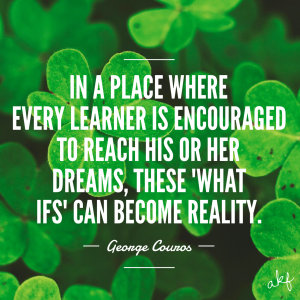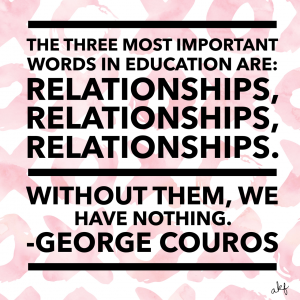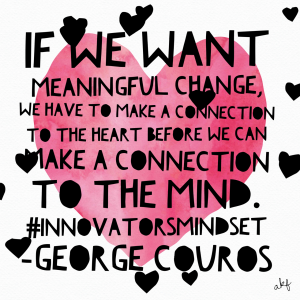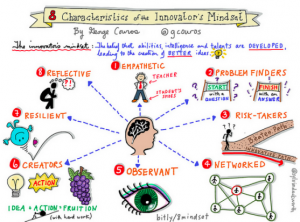‘Our goal should be to create schools and communities that equip young people in developing skills, habits, and competencies that produce an educated citizenry rooted in healthy, personalized, and productive relationships.’ – Jimmy Casas
A college professor of mine once said that you can never make a bad decision if at the time you truly believe you are doing what is best for students. This statement has resonated with me through my 17 years as an educator from classroom teacher to Dean of Students to Instructional Coach. I have tried to maintain this mindset when making decisions that impact students. I believe the most important aspect of principal leadership is to be a champion for all students at all times and expect all stakeholders to do the same. In order to do that, a principal must develop relationships with all stakeholders. Relationships with students, parents, staff, and community are all essential components in ensuring success for students. I am currently reading Culturize by Jimmy Casas (again). This book reiterates how a leader is the key to establishing and maintaining the culture of a building through being a champion for kids and building relationships. Casas defines culturize as cultivating a community of learners by behaving in a kind, caring, honest, and compassionate manner in order to challenge and inspire each member of the school community to become more than they ever thought possible. How is this definition not in the best interest of our students? Creating an inspiring school climate may be a challenging task, however the benefits will be experienced not only by the students, but also the entire school community. So how do we make it happen? Maintaining a positive presence within the school environment/climate, establishing high expectations, and building authentic relationships is essential to meeting our goals. The same wise professor I mentioned before also said that while students are in the building a principal needs to be interacting with them and not be in their office. He said the majority of paperwork happens outside of the students day. All stakeholders need to see a strong positive principal presence not only within the school, but within the community as well. High expectations are crucial for student success. By not holding all stakeholders to a high standard, we are saying they are not capable or we don’t care if they contribute to our students’ success. I am often inspired by colleagues who speak of their expectations on what’s best for students and it makes me want to rise to the challenge. However, a positive presence and having expectations are nothing without relationships. Stakeholders want to feel valued and appreciated and when they do they are willing to take risks and do the work you as the principal are empowering them to achieve.
What is the most important aspect of principal leadership to you?




